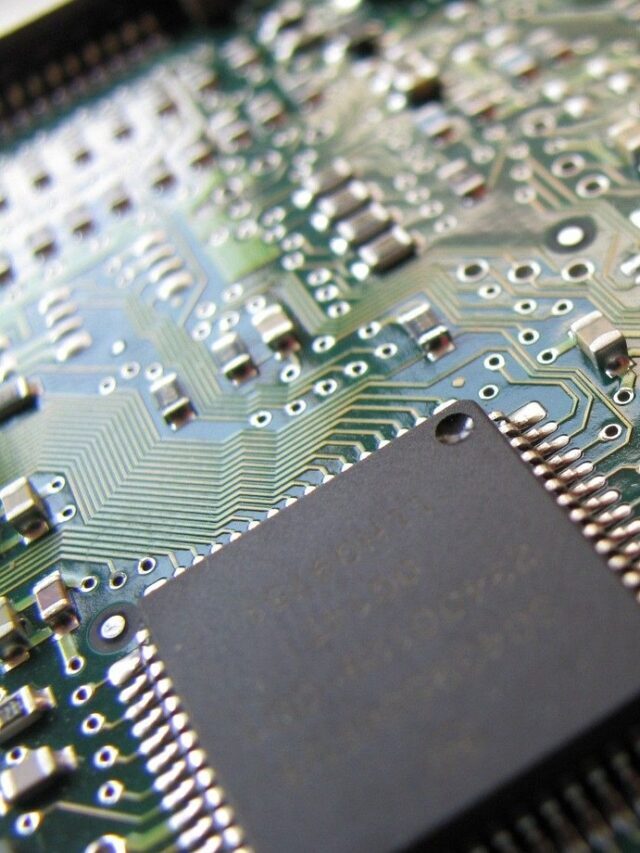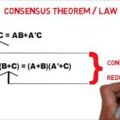The Graduate Aptitude Test in Engineering (GATE) is one of the most competitive exams for engineering students in India. To succeed, it’s essential to have a realistic and relatable strategy that aligns with the challenges students face. Below is a preparation plan that every student can connect with, tailored to both pre-final year and final-year students.
Preparation Strategy for Pre-Final Year Students
1. Prioritize Core Subjects:
- As pre-final year students are already in touch with core subjects, begin your preparation by focusing on Digital Electronics, Analog Electronics, and Signals and Systems. These subjects form the foundation for several other topics and are crucial for GATE.
- Once you build a strong understanding of these, move on to the remaining subjects like Control Systems, Communications, and Electromagnetics in a phased manner.
2. Balance Breadth and Depth:
- A subject is like an ocean, so avoid spending too much time on a single topic. Dedicate a fixed amount of time to each subject before moving to the next. For example, spend two weeks on Digital Electronics and then shift to Signals and Systems.
- Aim to qualify the approximate cut-off marks first. Once confident in clearing the cut-off, work towards answering additional questions to maximize your score.
3. Solve Previous Years’ Papers:
- Go through the last 3-5 years of GATE question papers. This will help you understand the exam pattern, frequently asked topics, and difficulty level.
- Practice solving these papers in a timed manner to simulate the actual exam environment.
4. Regular Revision and Practice:
- Make concise notes while studying. Include important formulas, concepts, and shortcuts for each subject.
- Revise these notes regularly to retain the information.
- Allocate a specific day each week to revisit previously covered topics and solve practice questions.
5. Consistency Over Intensity:
- Dedicate 1-2 hours daily for GATE preparation alongside your regular coursework. Use weekends to extend study hours or take mock tests.
- Join a test series or online group for consistent practice and peer support.
Preparation Strategy for Final Year Students
1. Smart Subject Selection:
- With less time available, focus on high-weightage subjects like Control Systems, Communications, and Digital Circuits.
- Choose subjects based on your strengths and the time required to cover them.
2. Solve and Analyze Mock Tests:
- Begin solving full-length mock tests every week to get a realistic sense of your preparation level.
- Analyze your performance after each test. Focus on weak areas and improve your accuracy and speed.
3. Quick and Focused Revision:
- Use short notes and flashcards for quick revision of key formulas and concepts.
- Avoid learning new topics close to the exam. Instead, revise and strengthen what you’ve already studied.
4. Manage Time Effectively:
- Allocate 6-8 hours daily for preparation. Divide this time into segments: theory review, problem-solving, and mock test analysis.
- Keep your weekends for revising multiple subjects and attempting full-length tests.
5. Stay Exam-Ready:
- Familiarize yourself with the virtual calculator provided in the GATE exam to save time during calculations.
- Practice time management by attempting previous year’s papers within the three-hour time limit.
General Tips for All Students
1. Learn From Past Toppers:
- Watch interviews or read blogs of previous GATE toppers to understand their preparation strategies and common mistakes.
- Adapt their techniques to suit your study habits.
2. Create a Balanced Study Plan:
- Include time for theoretical study, problem-solving, and revision in your daily schedule.
- Focus more on weak areas but do not neglect your strengths.
3. Stay Positive and Motivated:
- Set small, achievable goals and track your progress regularly.
- Celebrate milestones to keep yourself motivated.
By following this relatable and realistic plan, students can confidently prepare for GATE 2025. Remember, consistent effort and smart work, combined with a clear understanding of the syllabus, will lead you to success.
GATE-2025 EC Syllabus
| Section Name | Topics |
|---|---|
| Section 1: Engineering Mathematics | Linear Algebra: Vector space, basis, linear dependence and independence, matrix algebra, eigenvalues and eigenvectors, rank, solution of linear equations (existence and uniqueness). |
| Calculus: Mean value theorems, theorems of integral calculus, evaluation of definite and improper integrals, partial derivatives, maxima and minima, multiple integrals, line, surface and volume integrals, Taylor series. | |
| Differential Equations: First-order equations (linear and nonlinear), higher-order linear differential equations, Cauchy's and Euler's equations, methods of solution using variation of parameters, complementary function and particular integral, partial differential equations, variable separable method, initial and boundary value problems. | |
| Vector Analysis: Vectors in plane and space, vector operations, gradient, divergence, and curl, Gauss's, Green's, and Stokes’ theorems. | |
| Complex Analysis: Analytic functions, Cauchy’s integral theorem, Cauchy’s integral formula, sequences, series, convergence tests, Taylor and Laurent series, residue theorem. | |
| Probability and Statistics: Mean, median, mode, standard deviation, combinatorial probability, probability distributions (binomial, Poisson, exponential, and normal), joint and conditional probability. | |
| Section 2: Networks, Signals, and Systems | Circuit Analysis: Node and mesh analysis, superposition, Thevenin's theorem, Norton's theorem, reciprocity. |
| Sinusoidal Steady-State Analysis: Phasors, complex power, maximum power transfer. | |
| Time and Frequency Domain Analysis of Linear Circuits: RL, RC, and RLC circuits, solution of network equations using Laplace transform. | |
| Linear 2-port Network Parameters: Wye-delta transformation. | |
| Continuous-Time Signals: Fourier series and Fourier transform, sampling theorem, and applications. | |
| Discrete-Time Signals: DTFT, DFT, z-transform, discrete-time processing of continuous-time signals. | |
| LTI Systems: Definition and properties, causality, stability, impulse response, convolution, poles and zeroes, frequency response, group delay, phase delay. | |
| Section 3: Electronic Devices | Energy Bands: Intrinsic and extrinsic semiconductors, equilibrium carrier concentration, direct and indirect band-gap semiconductors. |
| Carrier Transport: Diffusion current, drift current, mobility and resistivity, generation and recombination of carriers, Poisson and continuity equations. | |
| Devices: P-N junction, Zener diode, BJT, MOS capacitor, MOSFET, LED, photodiode, and solar cell. | |
| Section 4: Analog Circuits | Diode Circuits: Clipping, clamping, and rectifiers. |
| BJT and MOSFET Amplifiers: Biasing, AC coupling, small-signal analysis, frequency response. | |
| Current Mirrors and Differential Amplifiers. | |
| Op-Amp Circuits: Amplifiers, summers, differentiators, integrators, active filters, Schmitt triggers, and oscillators. | |
| Section 5: Digital Circuits | Number Representations: Binary, integer, and floating-point numbers. |
| Combinational Circuits: Boolean algebra, minimization of functions using Boolean identities and Karnaugh map, logic gates and their static CMOS implementations, arithmetic circuits, code converters, multiplexers, and decoders. | |
| Sequential Circuits: Latches and flip-flops, counters, shift-registers, finite state machines, propagation delay, setup and hold time, critical path delay. | |
| Data Converters: Sample and hold circuits, ADCs, and DACs. | |
| Semiconductor Memories: ROM, SRAM, and DRAM. | |
| Computer Organization: Machine instructions and addressing modes, ALU, data-path and control unit, instruction pipelining. | |
| Section 6: Control Systems | Components: Basic control system components, feedback principle, transfer function, block diagram representation, signal flow graph. |
| Analysis: Transient and steady-state analysis of LTI systems, frequency response. | |
| Stability Criteria: Routh-Hurwitz and Nyquist stability criteria. | |
| Plots and Compensation: Bode and root-locus plots, lag, lead, and lag-lead compensation. | |
| State Space Analysis: State variable model and solution of state equations of LTI systems. | |
| Section 7: Communications | Random Processes: Auto-correlation and power spectral density, properties of white noise, filtering of random signals through LTI systems. |
| Analog Communications: Amplitude modulation and demodulation, angle modulation and demodulation, spectra of AM and FM, superheterodyne receivers. | |
| Information Theory: Entropy, mutual information, and channel capacity theorem. | |
| Digital Communications: PCM, DPCM, digital modulation schemes (ASK, PSK, FSK, QAM), bandwidth, inter-symbol interference, MAP, ML detection, matched filter receiver, SNR and BER, fundamentals of error correction, Hamming codes, CRC. | |
| Section 8: Electromagnetics | Maxwell's Equations: Differential and integral forms and their interpretation, boundary conditions, wave equation, Poynting vector. |
| Plane Waves and Properties: Reflection and refraction, polarization, phase and group velocity, propagation through various media, skin depth. | |
| Transmission Lines: Equations, characteristic impedance, impedance matching, impedance transformation, S-parameters, Smith chart. | |
| Waveguides and Antennas: Rectangular and circular waveguides, light propagation in optical fibers, dipole and monopole antennas, linear antenna arrays. |











